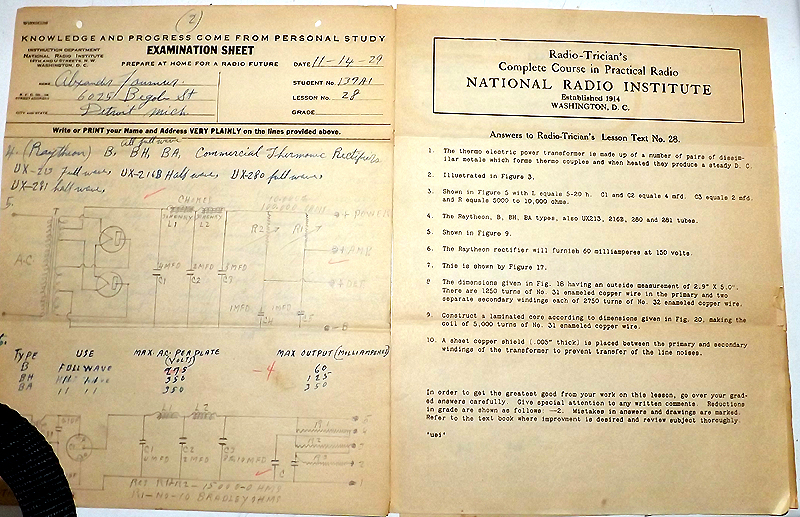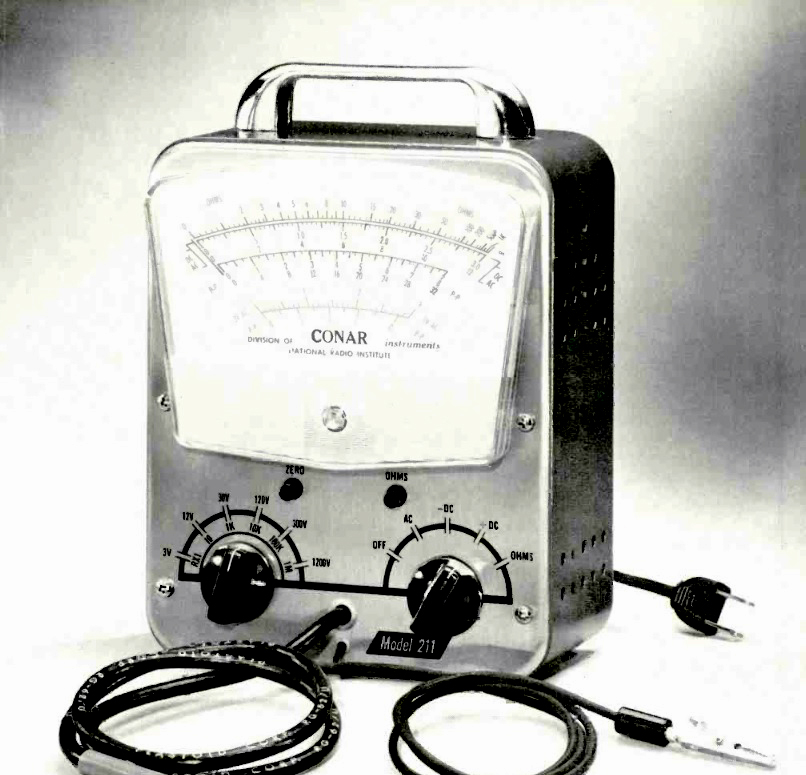
National Radio Institute was a privately owned and operated “for profit” trade school based in Washington, D.C. The school was founded in 1914 as The National Radio School, an on-campus institution for post-secondary school training of radio technicians and operators. James Ernest Smith (1881-1973), the original co-founder with Emmanuel R. Haas, was a graduate of Worcester Polytechnic Institute (B.S.E.E.). He previously was employed by Westinghouse, and he entered the education field when he first substituted for an ill instructor at McKinley Manual Training High School, and was shortly thereafter offered a permanent teaching position. Soon, students began coming to Smith for private instructions on material more advanced than what was being offered in the high school.
Smith realized the potential and soon rented a room in a local movie theater building, where he established a small school able to handle four students. He hired another instructor, Albert Dowie, who remained as the school's chief instructor until his death in 1958. Co-founder Emmanuel Hass was an employee of the theater, the person who was able to offer the space for the school, and he remained as as V.P. and business manager for the school.
During World War I, Smith was asked to organize training programs for the military at both Howard and Yale Universities. At the end of the war, Edward Degener joined NRI as the advertising manager, and began performing many of the duties of Haas, who was on leave of absence.
The school attracted many students, and it was soon moved to larger quarters and renamed National Radio Institute. In 1923, a decision was made to eliminate on-campus classes, and to offer training to a much larger potential student body through home study programs. Throughout the next four decades, NRI produced many of the engineers and technicians who worked in the radio industry. The school advertised heavily in magazines such as Boys' Life, Polular Science, Electronics Illustrated, and others. This was responsible for attracting most of NRI's students in that era.

An example of actual course materal and student's test paper from National Radio Institute
In 1947, Hass died, and his responsibilities were passed down to Smith's son James Morrison Smith. The elder Smith retired in 1956 at the age of 75, turning over the presidency to his son. The following year, a new 56,000 square foot building was erected on Wisconsin Avenue in Washington, in which it remained until its closing four decades later.
NRI was famous for the introduction of its CONAR (COmpany NAtional Radio) kits which allowed students to build their own test instruments, TV sets and radios as part of their training. It is believed that the success of the CONAR model was the basis for the idea of kit sales to the public by companies such as Heathkit, Allied Radio and EICO.

Conar VTVM kit that was sold to students as part of their course material
In 1967, McGraw-Hill Publishing bought NRI, thereby allowing NRI's technical material to be sold through books published by the company. NRI was renamed The McGraw-Hill Continuing Education Center. The younger Smith retired in 1976, and he was succeeded by Jack Thompson and Edward Beach. The last director was Nick Maruhnich who held the post until 1999. He was also a senior VP for McGraw-Hill's Special Projects Division. The school's enrollment peaked at 80,000 in the 1980s, and it is credited as the first school to offer students a digital computer as part of their training.
By the 1990s, market and ecomomic forces had weighed heavily on NRI, and the school was forced to close in 2002. Nevertheless, what once began in a small room behind a Washington D.C. movie theater, remained, throughout the 20th Century as one of the great institutions in the field of electronics and radio in America.
Note: Much of the information contained in this article is from Wikipedia (www.wikipedia.org) and from NRI documents contained in the library of the Museum Of Yesterday (www.MuseumOfYesterday.org).
The National Capital Radio and Television Museum (nctv.org) in Washington D.C. currently serves as the official repository for the files of the National Radio Institute.